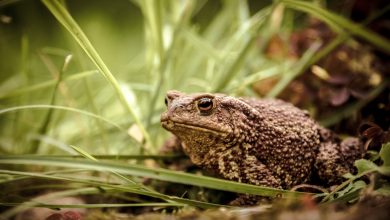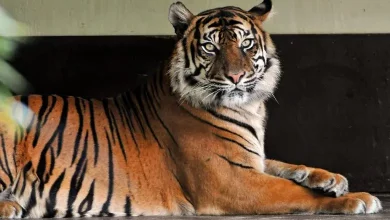Polar bear population decline slows, but still at risk from climate change

Polar Bears Are Found In The Arctic Region, Primarily In The Areas Surrounding The North Pole.
They Are Distributed Throughout The Arctic Ocean And Its Surrounding Seas, Including The Barents Sea, Chukchi Sea, Beaufort Sea, And The Canadian Arctic Archipelago.
They Are Also Found In Alaska, Canada, Greenland, Norway, And Russia.
Polar Bears Require Sea Ice For Their Survival, As It Is Essential For Their Hunting And Breeding.
Sea Ice Is Where They Hunt For Their Primary Prey, Seals.
The Sea Ice Also Provides Them With A Platform To Travel Long Distances And Access Different Feeding Areas.
They Use Sea Ice As A Hunting Platform, As They Wait At The Edge Of The Sea Ice For Seals To Come Up For Air.
The Sea Ice Also Plays A Critical Role In The Mating And Reproduction Of Polar Bears.
Female Polar Bears Use The Sea Ice To Den And Give Birth, And The Cubs Stay With Their Mothers On The Sea Ice Until They Are Old Enough To Hunt For Themselves.
The Sea Ice Is Also Important For The Polar Bears’ Habitat, As It Provides Them With A Platform To Travel Long Distances And Access Different Feeding Areas.
The Sea Ice Is Also Where Polar Bears Find Food, Rest, And Give Birth.
However, Climate Change Is Causing The Sea Ice To Retreat, Which Is Having A Significant Impact On Polar Bears’ Survival And Population.
As Sea Ice Melts, Polar Bears Are Losing Their Hunting Grounds, Which Is Leading To A Decrease In Their Population.
This Highlights The Importance Of Protecting The Arctic Sea Ice And Reducing Greenhouse Gas Emissions To Slow Down Climate Change And Preserve The Habitat Of The Polar Bears.
In Addition To The Importance Of Sea Ice For Hunting, Breeding, And Traveling, Polar Bears Also Have Other Habitat Needs.
Denning:
Female Polar Bears Build Dens In The Snow, Usually On Land, Where They Give Birth And Raise Their Cubs.
These Dens Provide Protection From The Harsh Arctic Weather And Give The Cubs A Safe Place To Grow And Develop.
Vegetation:
While Polar Bears Primarily Eat Seals, They Also Consume Vegetation, Berries, And Kelp When Food Is Scarce.
They Also Use Vegetation For Den-building And Camouflage.
Territoriality:
Polar Bears Are Solitary Animals And Have Large Home Ranges That Can Encompass Hundreds Of Square Miles.
Adult Males Have Larger Home Ranges Than Females And Subadult Males, Which Enables Them To Find More Food And Potential Mating Partners.
Overall, Polar Bears Are Arctic Animals That Rely On Sea Ice For Their Survival, They Also Require Other Habitats Such As Dens, Vegetation And A Large Home Range To Survive.
They Also Adapt To Different Environments Such As Islands And Coastal Areas.
However, As The Sea Ice Continues To Retreat Due To Climate Change, Polar Bears’ Habitats Are Shrinking, And This Is Having A Significant Impact On Their Survival And Population.
Threats And Conservation

Polar Bears Face A Variety Of Threats To Their Survival, Including Habitat Loss, Hunting, Pollution, And Climate Change.
These Threats Have Led To A Decline In Their Population, And The Species Is Currently Considered “Vulnerable” By The International Union For Conservation Of Nature (Iucn).
Habitat Loss:
Climate Change Is Causing The Sea Ice To Retreat, Which Is Having A Significant Impact On Polar Bears’ Survival And Population.
As Sea Ice Melts, Polar Bears Are Losing Their Hunting Grounds, Which Is Leading To A Decrease In Their Population.
Hunting:
Historically, Polar Bears Have Been Hunted For Their Fur, Meat, And Body Parts.
While Hunting Has Been Regulated In Many Countries, Illegal Hunting Still Occurs In Some Areas.
Pollution: Pollution, Especially From Oil And Gas Development, Can Harm Polar Bears And Their Habitat.
Oil Spills Can Contaminate The Bears’ Food And Fur, And Industrial Activities Can Disturb Their Breeding And Denning Areas.
Climate Change:
Climate Change Is Causing The Sea Ice To Retreat, Which Is Having A Significant Impact On Polar Bears’ Survival And Population.
As Sea Ice Melts, Polar Bears Are Losing Their Hunting Grounds, Which Is Leading To A Decrease In Their Population.
To Protect Polar Bears And Their Habitat, Conservation Efforts Are Being Made.
These Include Hunting Regulations, Habitat Protection, And Efforts To Reduce Greenhouse Gas Emissions To Slow Down Climate Change.
Regulations Are In Place To Protect Polar Bears, Including Hunting Quotas, Hunting Bans In Some Areas And International Agreements Such As The Convention On International Trade In Endangered Species Of Wild Fauna And Flora (Cites).
Habitat Protection Is Also Important, Such As The Creation Of Protected Areas, And The Reduction Of Human Activities In Polar Bear Habitats.
Efforts To Reduce Greenhouse Gas Emissions That Contribute To Climate Change, Such As Reducing The Use Of Fossil Fuels, Are Also Important To Preserve Polar Bears’ Habitats.
In Addition To The Measures Previously Mentioned, There Are Other Efforts Being Made To Help Conserve Polar Bears And Their Habitat.
Research And Monitoring:
Scientists Are Studying Polar Bears To Learn More About Their Biology, Behavior, And Population Dynamics.
This Research Helps Conservation Efforts By Providing A Better Understanding Of The Species And Its Needs.



